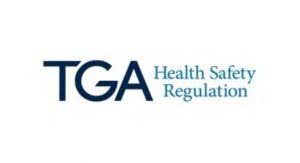The article highlights the aspects related to the regulatory framework for telecommunication products, radiation-emitting medical devices as well as the software used to power healthcare products.

Table of Contents
The Therapeutic Goods Administration (TGA), an Australian regulating authority, has published a guidance document dedicated to active medical devices.
The document provides an overview of the regulatory requirements applicable under the existing legal framework and also provides additional clarifications and recommendations to be taken into consideration by medical device manufacturers and other parties involved in order to ensure compliance thereto.
At the same time, provisions of the guidance are non-binding in their legal nature, nor are they intended to introduce new rules or impose new obligations.
The authority also reserves the right to make changes to the guidance and recommendations provided therein, should such changes be reasonably necessary to reflect corresponding amendments to the underlying legislation.
Telecommunications and Radio-Communications Transmitters
The Australian Communications and Media Authority (ACMA) plays an important role in overseeing broadcasting, the Internet, radio communications, and telecommunications.
The scope of its responsibility covers the regulatory matters related to the transmission methods, such as Bluetooth and WiFi. In particular, the authority manages the regulatory frameworks for:
- Telecommunications equipment
- Radio-communications equipment
- Electromagnetic compatibility (EMC)
- Electromagnetic energy (EME).
It is important to mention that medical devices with telecommunications capabilities should comply with ACMA’s regulations.
For instance, home-use patient-monitoring devices equipped with modem ports are subject to this requirement.
The same approach should be applied with respect to medical devices such as wrist-worn sphygmomanometers that connect to smartphones via Bluetooth – in accordance with the guidance, they are also subject to ACMA’s radio-communications standards.
However, devices powered electrically and regulated as medical equipment are exempt from ACMA’s EMC standards, since they should satisfy the requirements outlined in the applicable Essential Principles which are more strict.
Active Implantable Medical Devices (AIMDs), especially those employing radio communications, should also comply with the relevant ACMA standards.
A specific provision under the ACMA Radiocommunications Class Licence 2015 applies to low-power radio communications for AIMDs, permitting certain devices such as the ones using Medical Implant Communications Systems (MICS) and Medical Body Area Network Systems (MBANS), under defined conditions. More information is available on the ACMA website.
- Radioactive and Radiation-Emitting Medical Devices
- The scope of the guidance also covers the regulatory matters related to radioactive medical devices.
- In accordance with the respective regulatory requirements, such medical devices are subject to regulation as AIMDs.
- This category covers such products as, for example, Brachytherapy spheres which function primarily through radiation.
The radiation emitted impacts the tissues, resulting in energy conversion at the tissue interface.
The specific nature of this conversion can vary, inducing a wide range of effects, e.g., temperature changes, molecular denaturing in cells, and other physical interactions.
It is also important to mention that under the applicable regulatory requirements, in vivo imaging agents, such as barium meals, fall under the category of medicinal products.
The TGA supervises the supply of radioactive medical devices in Australia.
In contrast, the Australian Radiation Protection and Nuclear Safety Agency (ARPANSA) and state and territory authorities oversee radioactive materials usage.
- ARPANSA’s expertise assists the TGA in evaluating radioactive devices.
- The TGA manages the supply of radiation-emitting medical devices in the country.
- These devices range from medical lasers and phototherapy apparatuses to X-ray machines and dental curing lamps.
Furthermore, certain products, such as laser combs, skin rejuvenation devices, and hair removal devices that release energy to the patient, are not medically classified unless they have therapeutic claims or are invasively used.
Current regulatory requirements for cosmetic products, especially radiation-emitting beauty therapy items, are under evaluation, and their status may change in the near future.
Both the TGA and ARPANSA, alongside state and territory authorities, regulate such medical devices and beauty therapy products that emit radiation.

Programmed and Programmable Medical Devices
A specific subset of active medical devices covers the products that are programmed, programmable, or software-based.
This category covers a wide range of products that might consist of software, firmware, or various types of memory and electronics, and operate based on an instruction set.
The programming could be conducted by either the manufacturer or the user, or both, and can be done before or after the device is supplied.
Essential Principle 12.1 lays out the key requirements for such devices, addressing the matters related to their design, development, production, maintenance, cybersecurity, and data management.
There are cyber-security guidelines available for medical devices, and particular classification rules are applicable to programmed and programmable devices.
Software in Medical Devices
The authority further acknowledges that software is often integrated seamlessly into electronic devices, like pacemakers, to run their operations when used for the intended purpose.
When a software functions as a part of the device, it should not be considered a distinct entity.
However, by the applicable regulatory requirements, software-defined as a standalone medical device is subject to registration on the Australian Register of Therapeutic Goods (ARTG).
Manufacturers should ensure their products are compliant with the regulatory requirements set forth by Essential Principle 13.
Furthermore, Essential Principle 13B emphasizes the importance of software versioning, stating that both version and build numbers should be accessible and identifiable to users.
The document also refers to the relevant TGA’s guide on the regulation of software-based medical devices for further guidance.
In summary, the present guidance provides an overview of the regulatory requirements to be applied concerning specific types of medical devices.
The document also describes cooperation between TGA and other regulating authorities in cases where the product in question is subject to regulation under different frameworks.
How Can RegDesk Help?
RegDesk is a holistic Regulatory Information Management System that provides medical device and pharma companies with regulatory intelligence for over 120 markets worldwide. It can help you prepare and publish global applications, manage standards, run change assessments, and obtain real-time alerts on regulatory changes through a centralized platform. Our clients also have access to our network of over 4000 compliance experts worldwide to obtain verification on critical questions. Global expansion has never been this simple.

